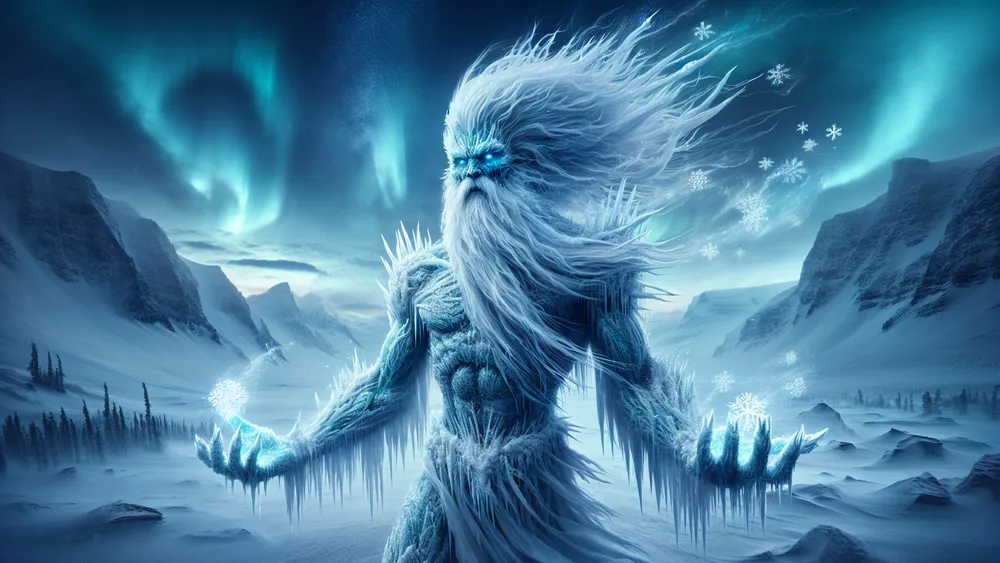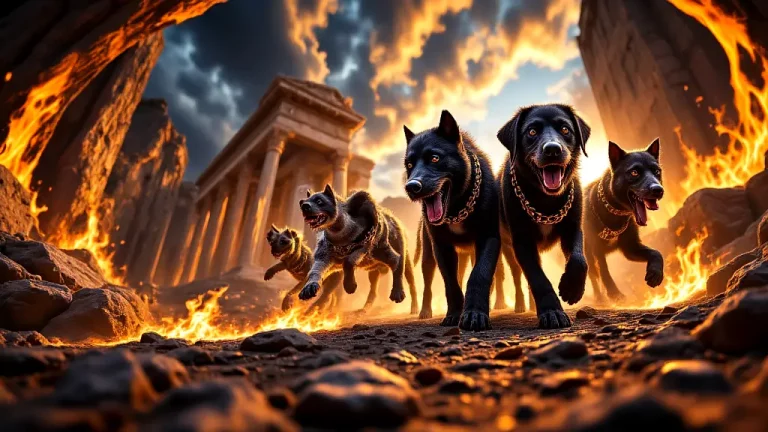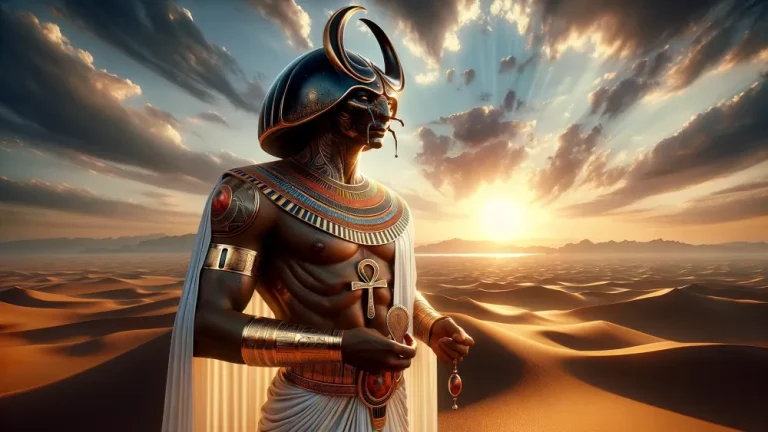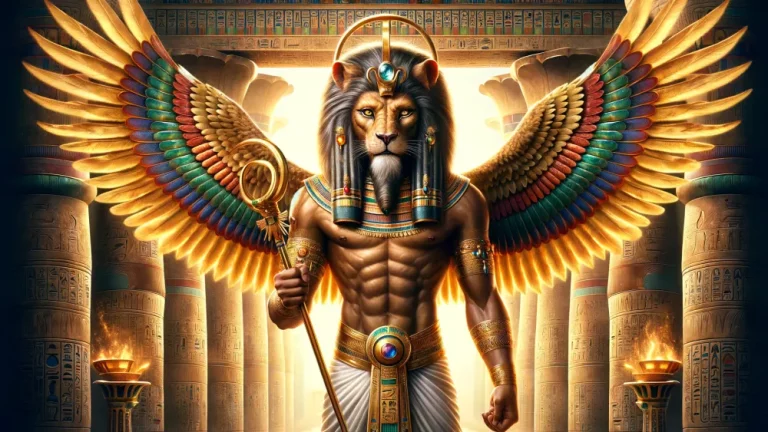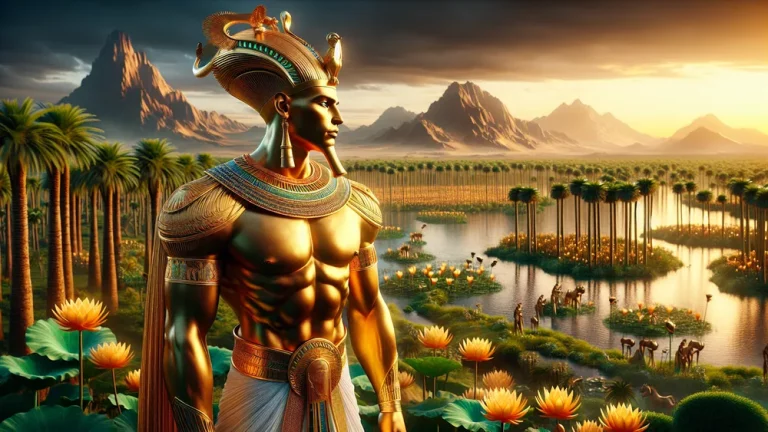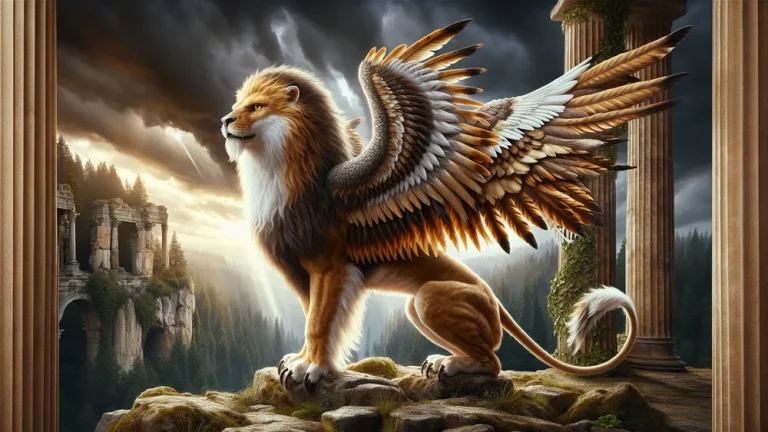Boreas: Greek God Of The North Wind And Winter
Boreas, the Greek god of the north wind and winter, is a very strong person in Greek stories. You think about being on a windy mountain. You feel the cold from winter’s air. This place belongs to Boreas. He controls the wild forces of nature. Exploring Greek mythology, we find out Boreas’ importance, his family tree, and the stories about him. Boreas took Oreithyia and changed the seasons.
Key Points:
- Boreas is the Greek god of the north wind and winter.
- He is known for controlling the forces of nature and changing seasons.
- Boreas’ parents are Astraeus and Eos, and he has siblings Zephyrus, Notus, and Eurus.
- Boreas had children Zetes, Calais, and Khione.
- One notable story is Boreas’ abduction of Oreithyia, an Athenian princess.
- Boreas’ role in Greek mythology includes his association with winter, the north wind, and horses.
- Boreas is described with purple wings and a conch shell, symbolizing power and control over the winds and seas.
He is interesting and complicated who still gets our attention now.
Boreas: Overview and Key Facts
| Category | Description |
|---|---|
| Parents | Astraeus, who is a Titan, and Eos, the dawn goddess |
| Siblings | Zephyrus (West Wind), Notus (South Wind), and Eurus (East Wind) |
| Role | God of the North Wind and winter |
| Associations | Horses, storms, and the Hyperboreans |
| Offspring | He had kids. Zetes, Calais, Khione, and others |
| Notable Stories | Important tales include Oreithyia’s abduction, and he helps Achilles in the Iliad. Odysseus gets his help in the Odyssey |
| Roman Equivalent | Aquilo (Septentrio) |
| Physical Appearance | Purple wings. Conch shell too. |
| Personality | Cruel and loving. Strong link to horses and nature éto. |
Family and Genealogy
After we looked at Boreas’ overview and key facts, we will look more at his family and history, by checking out his parents, brothers and sisters, and kids.
Parents and Siblings
Boreas, the Greek god of the north wind and winter, was born to Astraios and Eos. Astraios, god of the dusk, and Eos, morning god, came together and made the strong winds in Greek stories. This pair showed how the change from day to night happens, showing the loop of time.

Boreas’ brothers and sisters include Zephyrus, the west wind. There is Notus, the south wind, and Eurus, the east wind. These winds, which people called the Anemai, were known to be very strong, they could change nature. Together, they made a strong group that changed the seasons and weather. Here is a list of Boreas’ siblings:
- Zephyrus: The west wind. About springtime and soft winds.
- Notus: The south wind. About summertime and big storms.
- Eurus: The east wind. About autumn and soft leaves moving.
Boreas, along with his siblings Zephyrus, Notus, and Eurus, were powerful winds in Greek mythology that controlled the seasons and weather.
Offspring and Descendants
Boreas, the Greek god of the north wind and winter, had several kids who had important parts in Greek stories. His kids included Zetes, Calais, and Khione, each with their own special traits and tales. Known as the Boreads, Zetes and Calais were heroes with wings who had light, smooth hair. They could fly. Their hair and flying showed they were divine.
Khione was the snow god. She was linked to winter and cold. She was born to Boreas and Oreithyia, an Athens princess. Boreas‘ kids often had special powers, showing their divine background. Here is a table about Boreas’ kids:
| Child | Role in Greek Mythology |
|---|---|
| Zetes | Hero with wings. Light hair and flying. |
| Calais | Hero with wings. Light hair and flying. |
| Khione | Snow god. Winter and cold. |
These kids of Boreas had important parts in many myths and stories, often linked to their father’s connection with the wind and winter.

Mythological Stories and Associations
After looking at Boreas’ family and genealogy, we will now explore interesting tales and things connected to this strong god of the north wind and winter.
Abduction of Oreithyia
As the story goes, the myth of Boreas kidnapping Oreithyia is one of the most famous stories in Greek mythology. Boreas, the god of the north wind, loved Oreithyia, a beautiful princess of Athens. But she said no to him. This made Boreas very angry. Angry, Boreas decided to kidnap Oreithyia, using his strong winds to take her away.

This story is important in Greek mythology because it shows the power and anger of the gods. Boreas’ actions show what happens when someone says no to a god. It also shows how gods can control humans. This story shows Oreithyia’s bravery, as she stood firm against Boreas despite the danger.
As a princess of Athens, Oreithyia was important to the story. She was the daughter of King Erechtheus and Queen Praxithea. Oreithyia represents the human world, which the gods often control. Her kidnapping by Boreas reminds us of the gods’ power over humans. Here is a list of Oreithyia’s family members:
- King Erechtheus: Oreithyia’s father, the king of Athens.
- Queen Praxithea: Oreithyia’s mother, the queen of Athens.
- Procris: Oreithyia’s sister.
- Cerusa: Oreithyia’s sister.
- Chthonia: Oreithyia’s sister.
- Protogeneia: Oreithyia’s sister.
- Cecrops: Oreithyia’s brother.
- Metion: Oreithyia’s brother.
- Orneus: Oreithyia’s brother.
- Pandorus: Oreithyia’s brother.
Boreas and the Seasons
Boreas, the Greek god of the north wind and winter, had an important role in the seasons changing. Being the god of the cold north wind, Boreas made the icy winds blow, showing winter had arrived. So strong was his link with winter that he was often shown as a powerful, winged figure, leading his cold winds across the land.
This picture looks like a big storm with Boreas in charge, moving the snow and ice.
Mythology says Boreas worked with other wind gods, who played roles in seasons too. Zephyrus brought gentle spring breezes. Notus made the warm summer winds blow. And Boreas blew the cold, strong winds of winter. This changing of seasons was seen as a normal part of life, with each wind god doing their part in nature’s ongoing cycle. Here is a table showing Boreas’ role in the seasons changing:
| Season | Boreas’ Role |
|---|---|
| Winter | Makes the cold, harsh winds and snow blow |
| Spring | Steps aside for Zephyrus to bring gentle breezes |
| Summer | Lets Notus bring warm winds |
| Autumn | Prepares for winter by bringing cooler winds |
This seasonal cycle, with Boreas leading the way, was seen as natural and needed. Often shown in Greek works, it explained how they understood the world’s order.

Characteristics and Depictions
After seeing how Boreas affects the seasons, we will look at the interesting characteristics and pictures of this strong god of the cold wind and winter.
Physical Appearance
Boreas, the Greek god of the north wind and winter, shows a grand physical look. A noticeable thing about him is his purple wings, which are strong and beautiful, much like a bird in flight. These wings stand for power. They show he can move quickly across the land, making the harsh winds blow. Besides having wings, Boreas holds a conch shell. This stands for his control over the winds and the seas.
The meaning behind Boreas’ look is complex and interesting. His purple wings are linked to royalty and power. They make him look important as a god. The conch shell shows his tie to the sea and his power over the tides. Here is a list of what Boreas’ looks mean:
- Purple Wings: Stand for power, royalty, and beauty.
- Conch Shell: Shows control over the winds and the seas.
- Bearded Face: Means wisdom and strength.
- Muscular Build: Means physical power and strength.
Looking at Boreas’ look, we can better understand his role in Greek mythology. The meaning of his look becomes clear.
Boreas’ physical appearance symbolizes power, control over the winds and seas, wisdom, and strength, shedding light on his significance in Greek mythology.
Personality and Traits
Boreas, the Greek god of the north wind and winter, often shows a complicated personality with both cruel and loving nature. Boreas has fierceness and a bad temper, often seen with the cold he brings. He showed his cruelty when he took Oreithyia, a princess of Athens, because he loved her but took her by force.
This act shows Boreas acted on his desires without caring for others, showing his cruel and quick nature.
Due to Boreas being a caring family man, he wanted to make Oreithyia live forever and have children with her. Boreas‘ caring side is also seen in his good ties with the Athenians, as he helped them sometimes. Here is a table showing Boreas’ personality traits:
| Trait | Description |
|---|---|
| Cruelty | Boreas shows fierceness and a bad temper, often seen with the cold he brings. |
| Love | Boreas is a caring family man, seen in his wish to make Oreithyia live forever and have children with her. |
| Impulsiveness | Boreas acts without thinking about others, as shown in his taking of Oreithyia. |
| Devotion | Boreas cares deeply for his family and people like Oreithyia and the Athenians. |
The Pantheon of Greek Gods
In Greek mythology, there is a large and interesting place called the pantheon with many gods and goddesses included. They have unique personalities, powers, and stories. For a complete look at the Greek gods, visit this list of all the Greek gods. It looks at the lives and stories of these divine beings.
FAQs
1. What is Boreas’ role in Greek mythology?
Boreas’ role in Greek mythology is as the god of the north wind and winter.
2. Who are Boreas’ parents?
Boreas’ parents are Astraeus and Eos.
3. What is the story of Boreas and Oreithyia?
The story of Boreas and Oreithyia is about Boreas, the god of the north wind, kidnapping Oreithyia, an Athenian princess, after his gentle attempts to woo her failed.
4. What are Boreas’ associations in Greek mythology?
Boreas is associated with winter, the north wind, and horses in Greek mythology.

